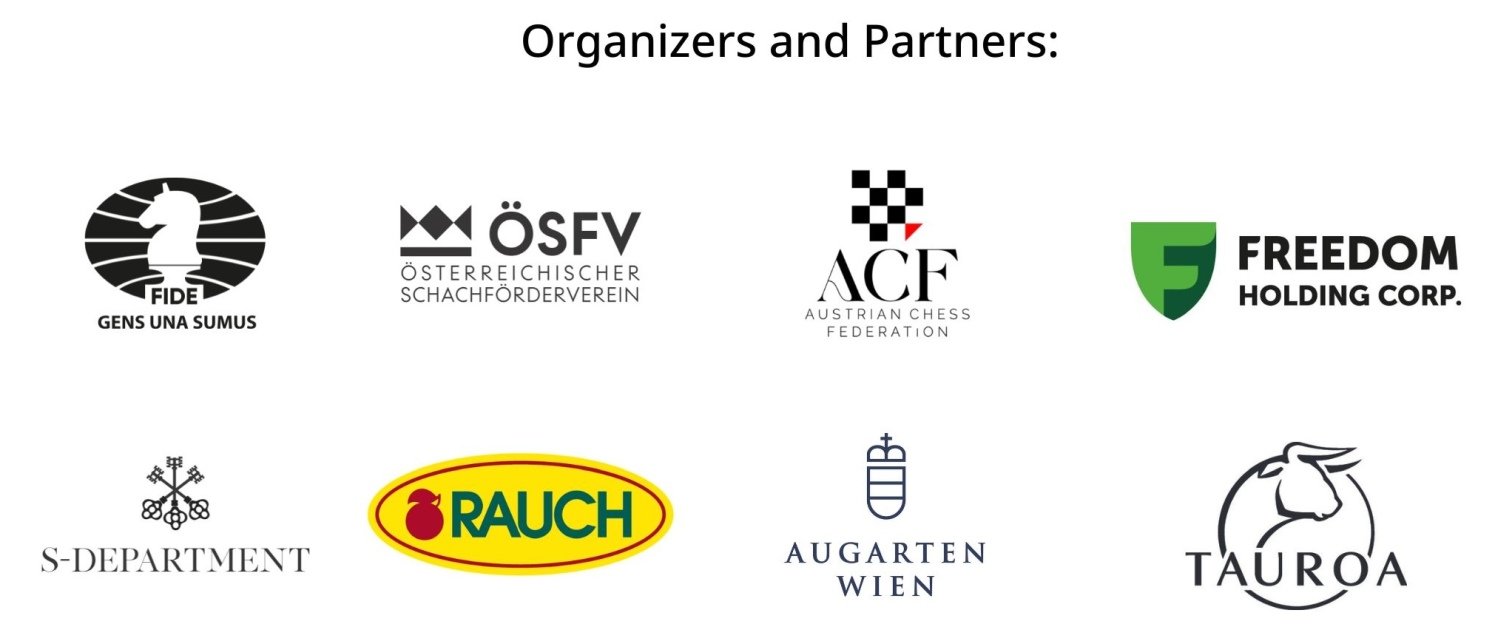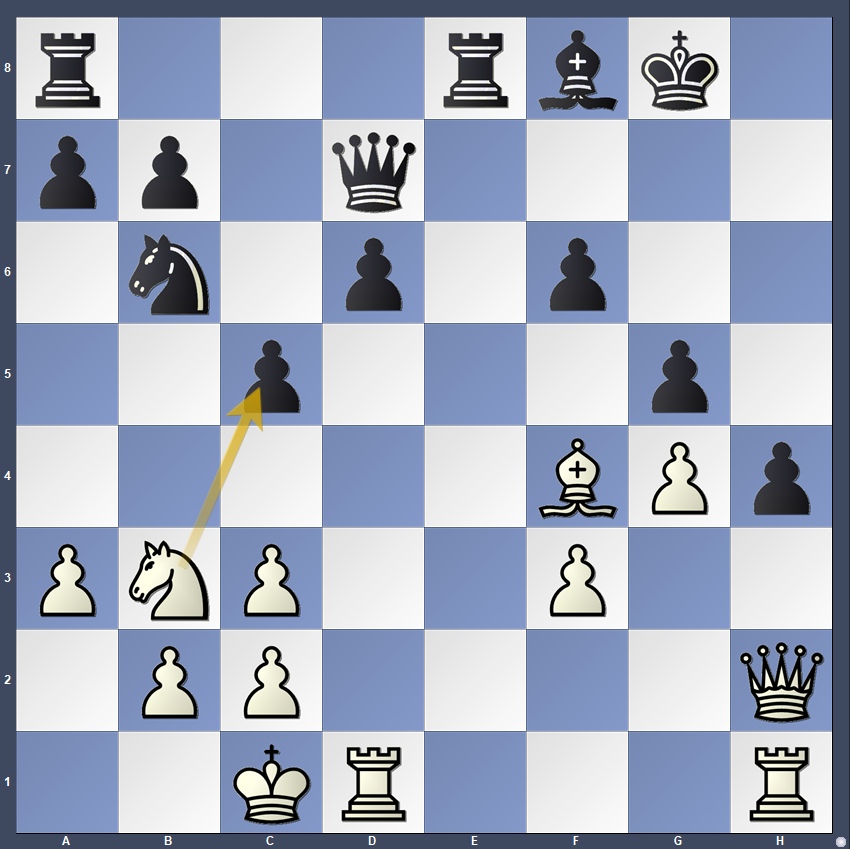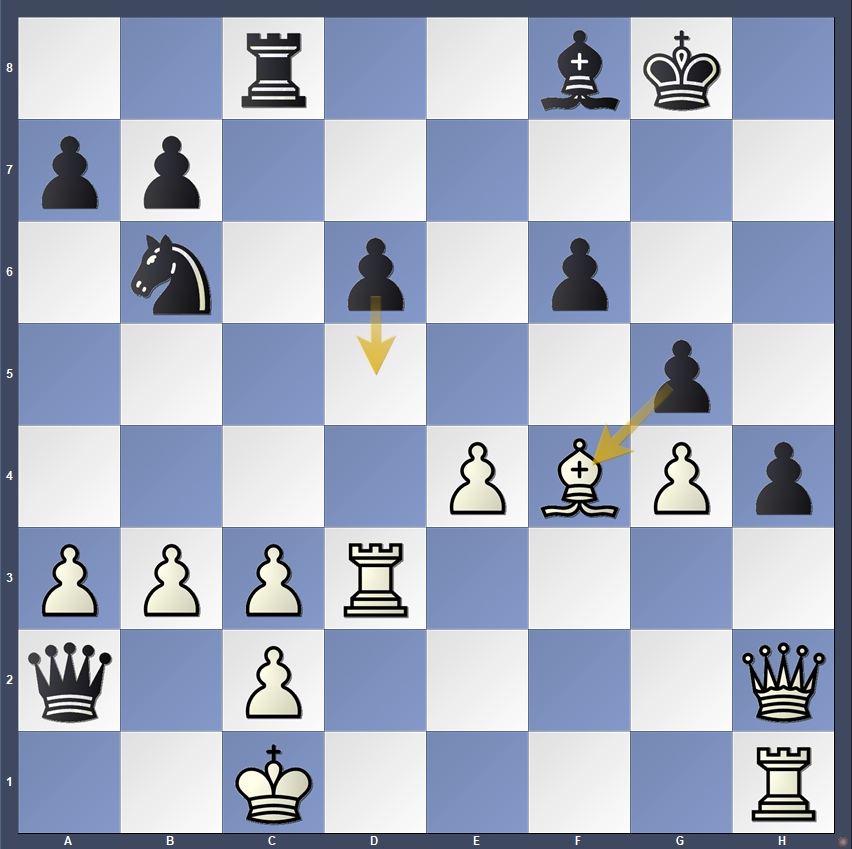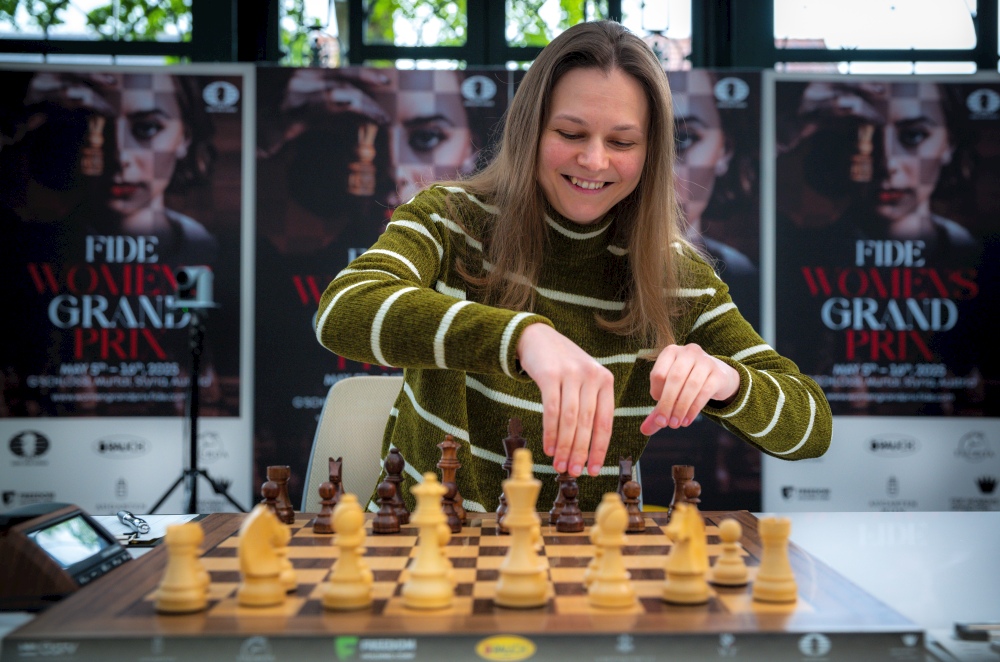
It was a decisive day in Austria, with four of five games ending in victory. Anna Muzychuk defeated Olga Badelka with black pieces, joining Vaishali in shared first after the Indian comfortably drew with Nana Dzagnidze. Alexandra Kosteniuk stopped Tan Zhongyi with a confident performance, while Zhu Jiner bounced back from the bottom, defeating Nurgyul Salimova. Mariya Muzychuk had a poor showing against Lela Javakhishvili and lost.
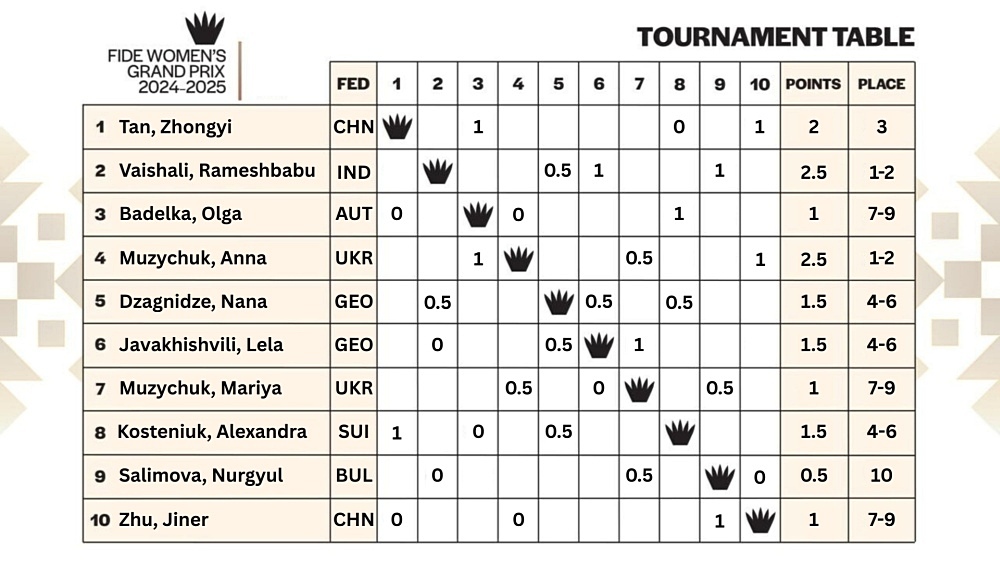
Tension and drama defined the third day of the final (sixth) leg of the 2024/2025 FIDE Women’s Grand Prix. Three of the five games featured opposite-side castling – often a sign that both sides are ready for a fight.
The first to score was Lela Javakhishvili from Georgia, who extended her unbeaten streak in classical chess against the onetime Women’s World Champion, Mariya Muzychuk.
The younger Muzychuk sister had a shaky showing. In the Giuoco Piano, a line Mariya usually handles with precision – she faltered, allowing Black to seize the initiative and settle into a comfortable position.
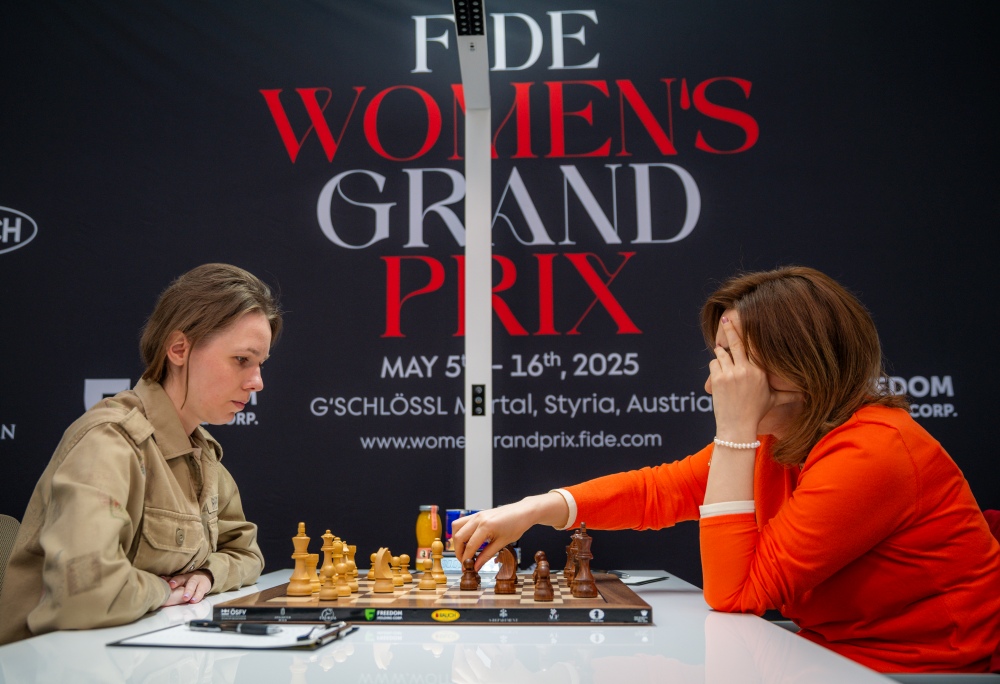
By move 20, Muzychuk’s pieces were uncoordinated and vulnerable to tactical threats. She soon lost a pawn and was down to under three minutes by move 25. Lela had a winning advantage, which she went on to convert without much difficulty.
In the post-game analysis, Lela expressed surprise at some of Mariya’s choices, noting that she may be an uncomfortable opponent for the Ukrainian. (According to the chessgames.com database, Javakhishvili has beaten Mariya Muzychuk four times, with seven draws and no losses in classical games.)
This win was a crucial bounce-back for Javakhishvili after her round-two loss to Vaishali. She now stands at 1.5/3. With two draws and a loss, Mariya Muzychuk has one point.
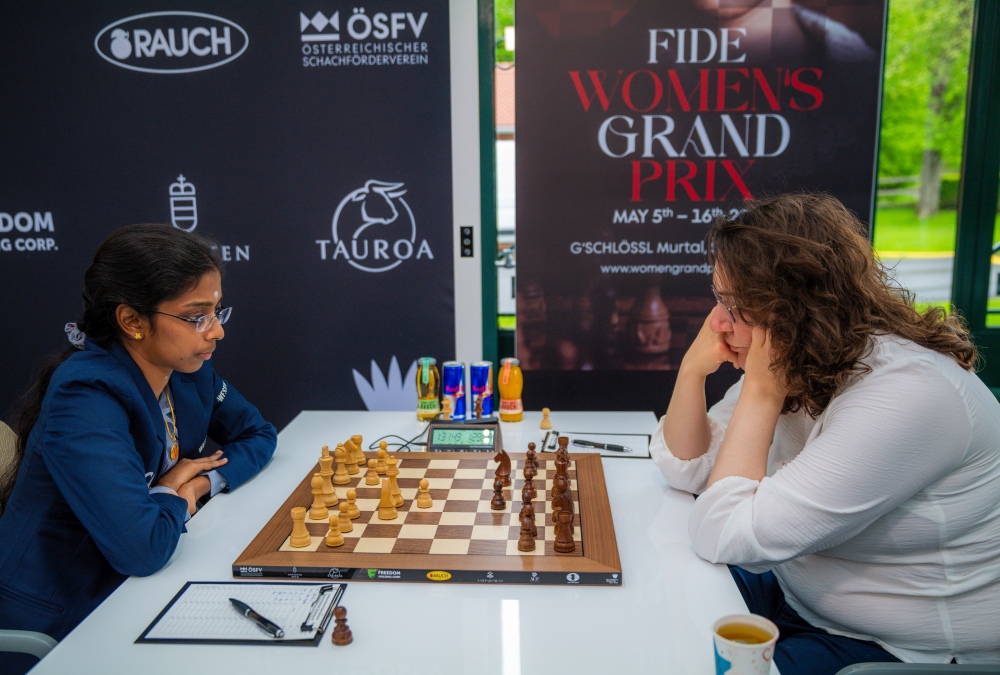
India’s Vaishali Rameshbabu continued her strong performance. She surprised Nana Dzagnidze with an early queen capture on d4 in the Sicilian. After a complex middlegame, the position simplified into an even endgame, with Black exerting pressure in the center. A draw was agreed on move 40 following a threefold repetition.
With 2.5/3, Vaishali maintains her excellent form and shares first place. After two frustrating draws marred by missed opportunities, Nana finally had a shorter, less taxing game, finishing day three with 1.5 points.
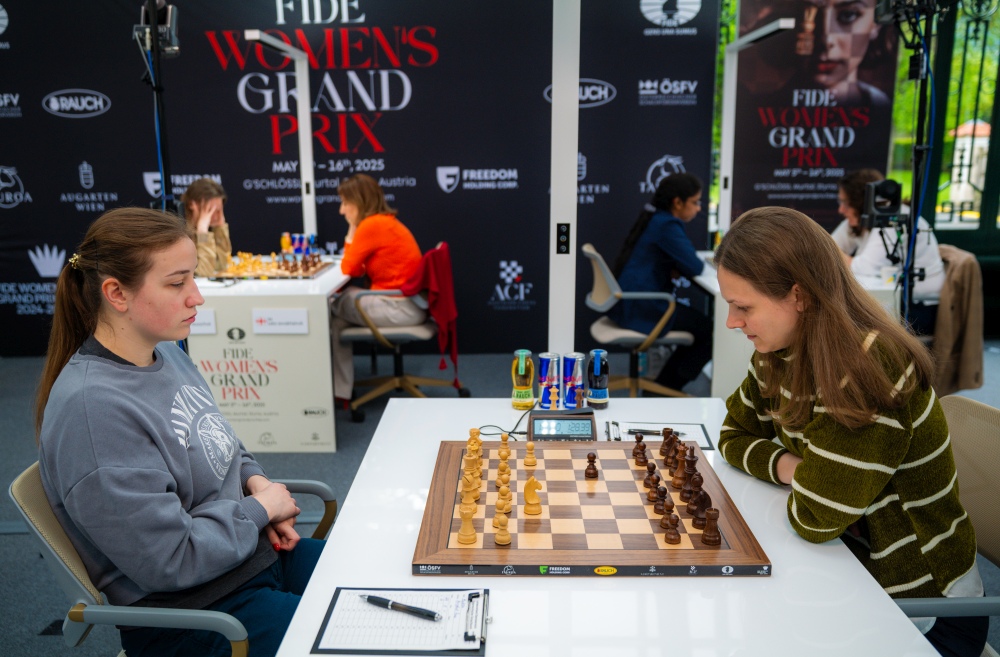
Olga Badelka chose an unusual approach in her game against Anna Muzychuk, starting with the 1.Nf3.
However, the position transposed into a rare line of the Sicilian with b3. Despite the surprise, Badelka emerged slightly worse from the opening. Still, she played bravely, looking for chances and nearly equalized, but a slip in the middlegame handed Muzychuk the initiative that gradually grew as the game progressed.
The Ukrainian eventually ended a pawn up in the centre. Despite the fact that losing that pawn gave White space to counter, Badelka missed her chances. The two transitioned to an endgame with minor pieces where Black had an extra pawn and a commanding position. Staying calm, Anna completely dominated in the endgame, claiming victory on move 50.
This put Anna Muzychuk in shared first place – a place where she needs to be if she is to stand a chance to win the 2024/2025 FIDE Women’s Grand Prix season and qualify for the Candidates. Badelka is on one out of three, having suffered two consecutive losses.
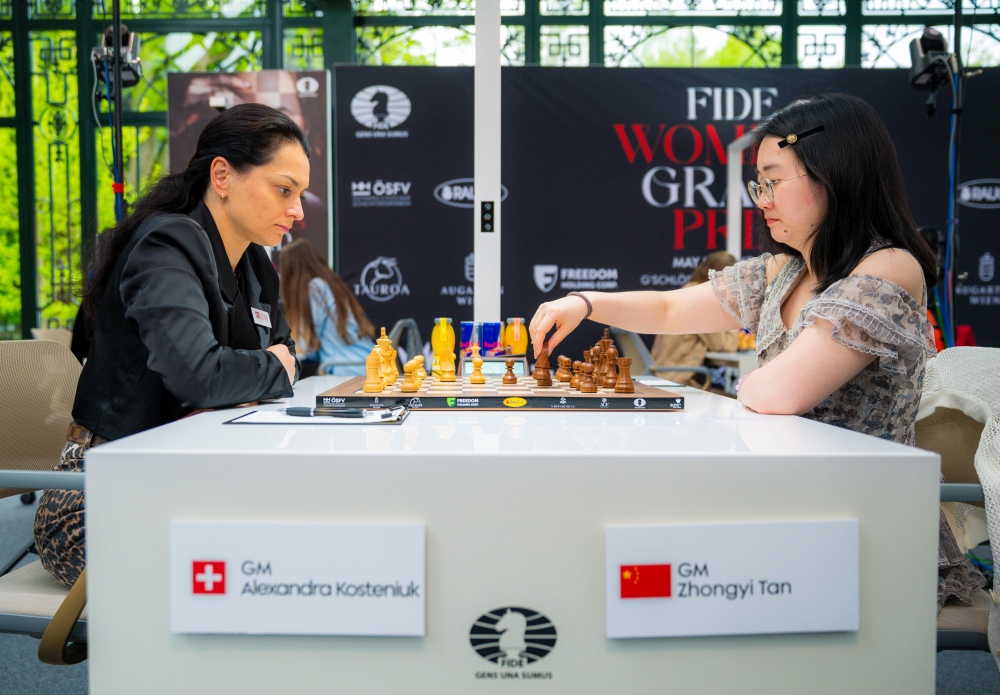
The last two games to finish, both culminated in a queen endgame.
The clash of former Women’s World Champions, Kosteniuk and Tan, progressed rapidly. In the classical line of the Queen’s Gambit Exchanged, neither player gained a clear edge. However, following exchanges in the center, Black lost her way.
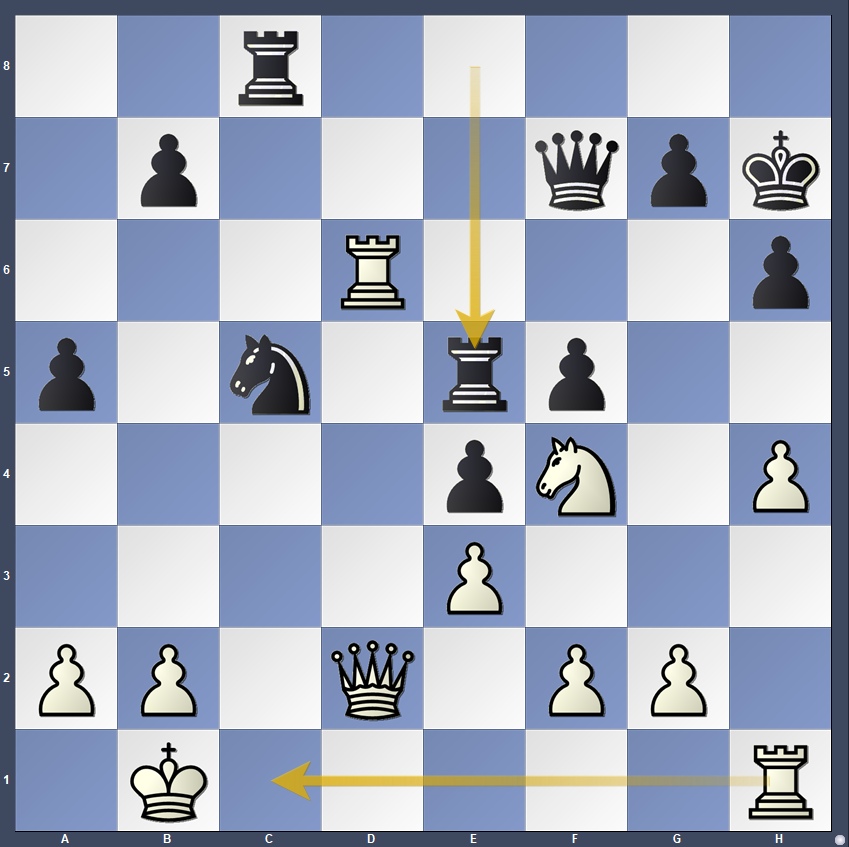
In this position, Tan has just put her rook on e5, to prevent Qd5 and an exchange of queens (the reserved 23…Qf8 with the same idea is much better). The move played by Tan allowed Alexandra to pin the knight and increase her control over the center, getting the upper hand.
24.Rc1! Rce8 25.Qd4 The knight is hanging and doesn’t have a good place to go.
Tan chose the lesser of two evils – 25…Nd3 – giving up a pawn to avoid entering a passive position.
Further exchanges followed, and the two ended up in a queen endgame where Kosteniuk was a pawn up and had a better structure. Soon, she collected another pawn. But Tan wasn’t giving up, despite being completely lost.
As Kosteniuk noted after the game, “the queen endgames are very hard to win” given chances of overlooking perpetual checks or even losing the queen if you miss an attack via a line or a diagonal. Despite a bit of shaky play towards the end, Kosteniuk kept her cool and converted her advantage into a full point.
A great achievement by Kosteniuk (now on 1.5/3) who came back by defeating one of the leaders and the highest-rated player in the event. However, another tough task lies ahead for Kosteniuk as she will be playing as Black in round four against one of the leaders – Anna Muzychuk.
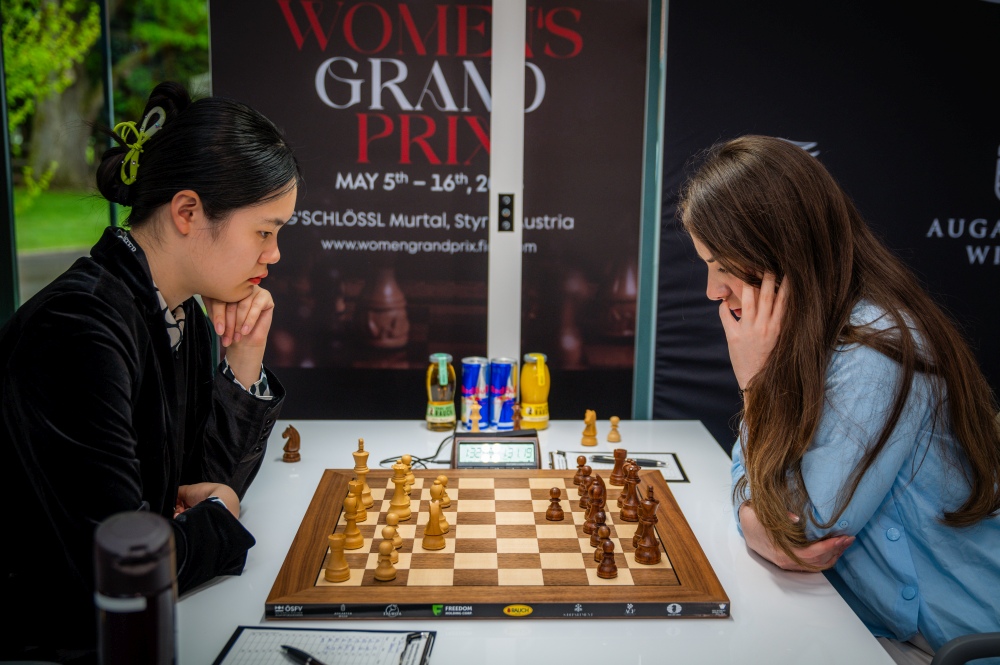
The last game to finish was one between Zhu Jiner and Nurgyul Salimova.
In one of the main lines in the Petroff, Zhu castled long, opposite to her opponent, signaling she was ready for a fight. Soon, Zhu sacrificed a pawn to launch an attack on the kingside which lead to a very sharp position.
Here Zhu played 24.Nxc5 – attacking the queen but leaving two pieces hanging. Nurgyul found the best move 24…Qf7 to which the Chinese reacted with 25.Ne4. If 25…gxf4 White takes the pawn on h4 and is threatening mate on h8, leading Black into a very uncomfortable position. Instead, 25…Rxe4! (25…Qa2 was another interesting option), sacrificing a rook for a very dangerous knight and also opening the space for Black to mount her own attack.
26.fxe4 Qa2 27.b3! Preventing Nc4.
27…Rc8 28.Rd3 – Very precisely played by Zhu.
Now, however, instead of the only move maintaining the balance, namely 28…d5! Salimova made a fatal mistake, taking the bishop with 28…gxf4? After 29.Qxh4 White is winning.
Zhu ended with three pawns for a knight but a dominating position on the board, which she carefully proceeded to convert into victory.
This game was a crucial moment for Zhu, who – together with Muzychuk – is in the race for winning the Grand Prix series. Having suffered two losses, she had to come back into the tournament if she wants to have a shot at the top position.
With half a point after three games, Salimova is in sole last place.
Augarten porcelain horses to crown the chess champions
Before the start of the round, Michael Stöttinger, President of the Austrian Chess Federation, presented the trophies that will be awarded to the winners. Crafted by Augarten, one of Austria’s most renowned fine china producers, the hand-made and hand-painted trophies take the form of a horse and have a total value of €10,000.
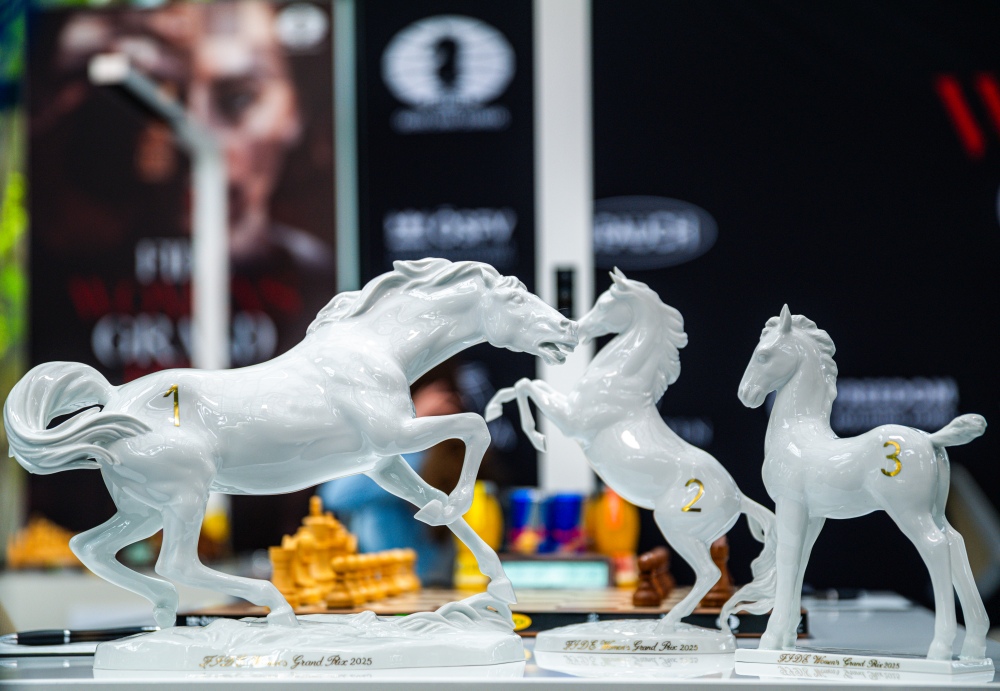
“Augarten is a signature product of Austria, and horses are perfect to symbolise power and speed. The knight is dynamic and unpredictable – even a master can overlook a fork! That’s why we chose the famous Augarten horses to become our trophies,” said Stöttinger.
Founded in 1718, Augarten is one of the oldest porcelain manufacturers in Europe, with its own bespoke coat of arms. The company has produced porcelain for all Austrian state dinners, as well as for embassies and the offices of the President and Chancellor of Austria.
Round four starts on Friday, May 9, at 3PM CET.
Round 4 pairings:
Nana Dzagnidze – Tan Zhongyi
Anna Muzychuk – Alexandra Kosteniuk
Nurgyul Salimova – Olga Badelka
Lela Javakhishvili – Zhu Jiner
Vaishali Rameshbabu – Mariya Muzychuk
Written by Milan Dinic
Photos: Przemysław Nikiel
About the tournament:
The tournament in Grosslobming is the final in a series of six tournaments in the 2024/2025 Women’s Grand Prix cycle.
Format: Ten players play a round-robin tournament (9 rounds). The time control is 90 minutes for the first 40 moves, followed by 30 minutes for the rest of the game, with an increment of 30 seconds per move starting from move 1.
Prize fund: €120,000 distributed among 10 participants based on placement (see Regulations)
For more information about the event, visit: womengrandprix.fide.com/
About the Women’s Grand Prix series
The FIDE Women’s Grand Prix (WGP) Series 2024-25 stands as a premier series in the international women’s chess calendar. In its seventh season, it serves as one of the crucial pathways to the Candidates.
The event comprises six tournaments, hosted in different countries: Georgia, Kazakhstan, Monaco, Cyprus, India and Austria.
The scoring system is conceptualised in a way that favours not just tournament victories, but consistency across events. Each player has a right to play in three out of the six events in the series.
The event is part of FIDE’s World Championship cycle, and the top two players in the WGP will qualify for the 2026 Candidates tournament. The winner of the Candidates will become the challenger to the current Women’s World Champion Ju Wenjun, who successfully defended her title against Tan Zhongyi in their 2025 match.
